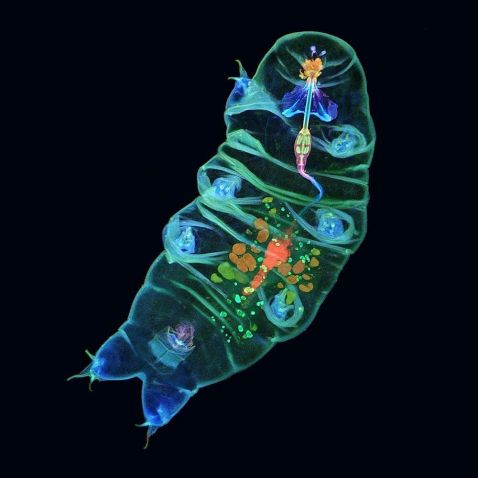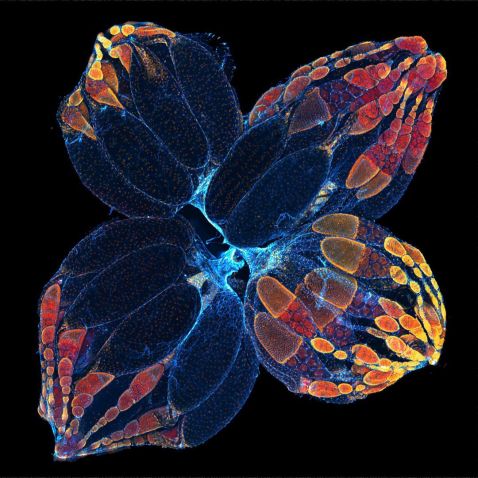It’s no surprise that the previous Image of the Year (IOTY) winners appeared in this month’s top five images as the submission deadline for our current competition draws near.
With that in mind, we want to remind you to submit your entry now! The deadline for the IOTY 2022 contest has been extended to March 30 at 10 p.m. EDT (March 31 at 11 a.m. JST). Submit your entry at our IOTY page for the chance to win a great prize—your choice of a microscope or a set of high-performance objectives!

Our top image of the month is a reappearance of our 2019 IOTY regional winner for the Americas. The winning image shows the vibrantly stained details of a tardigrade (also adorably called a moss piglet or water bear). We all love tardigrades, and this stunning image is one of our favorite portraits of a water bear!
Image courtesy of Tagide deCarvalho, the 2019 IOTY regional winner for the Americas.

Are we looking at a tropical flower? You may be surprised to learn this stunning image is actually an up-close look at the ovaries of Drosophila, a common fruit fly. While fruit flies make excellent research candidates, they also serve as beautiful subjects for microscope artwork!
Image courtesy of Yujun Chen, a 2021 IOTY honorable mention.

Feel like someone is watching you? These plant stomata may look like they have eyes but what you’re really seeing are pores found in the epidermis of leaves, stems, and other organs that control the rate of gas exchange. In this sample, the red color inside the epidermis cells is natural. The sample was a fresh, unstained epidermis of Stromanthe thalia, a common houseplant.
Image courtesy of Marek Miś. Captured using an Olympus BH2 microscope in polarized light.

This striking image captured by Håkan Kvarnström is another recurring favorite from our IOTY contest. Capturing the golden ratio, or divine proportion, this image has a surprising subject—a small, 2 mm snail. The dark blue is the snail, the red is from the algae, and the orange light is from cyanobacteria growing on the snail’s surface.
Image courtesy of Håkan Kvarnström, the 2018 European IOTY winner. Captured using an Olympus BX51 microscope.

Prickly and pretty? This sample is both! This colorful image was captured using a pentachrome stain on a section of a hedgehog spine. Fun fact: there are 17 species of hedgehogs found throughout parts of Europe, Asia, Africa, and New Zealand (hedgehogs are not native to Australia, and there are no living species native to the Americas).
Image courtesy of Kate Murphy. Captured with an Olympus BX40 microscope.
Bonus video! We’re never salty about learning something new.
Here Dr. Adolfo Sánchez-Blanco shows what it looks like when Epsom salt dissolves in water under the microscope.
Video and caption courtesy of Adolfo Sánchez-Blanco, PhD. Captured using an Olympus CX31 microscope with up to 200X magnification.
To see more images like these, be sure to follow us on Instagram at @olympuslifescience!
Want to share your own images? Go to our image submission site.
As a reminder, submit your entry to our 2022 IOTY contest before the deadline for the chance to win a prize.
Related Content
All Your Old Favorites―Our Most Popular Microscope Images for January 2023
.jpg?rev=CB93)
